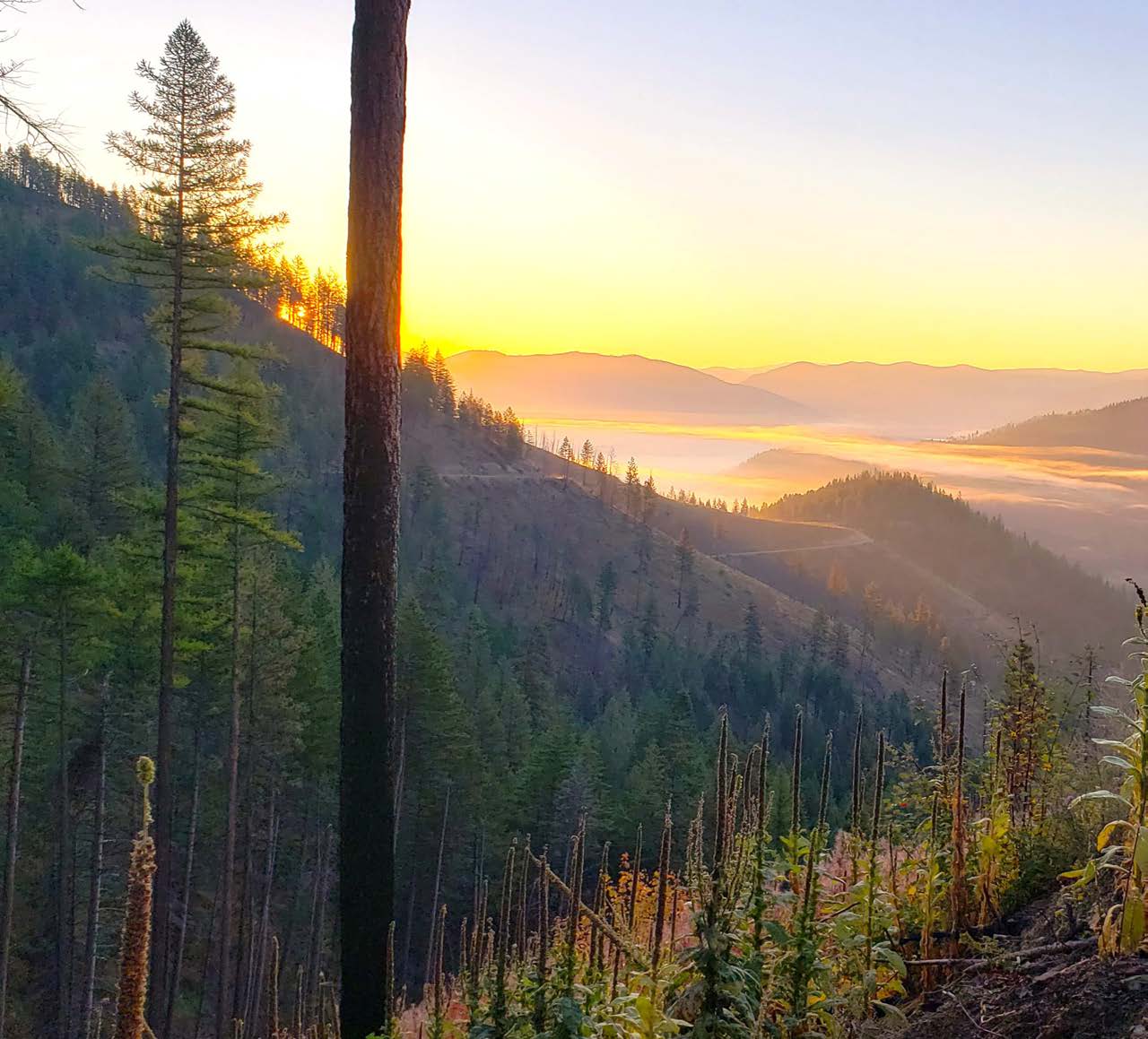Montana Family Forest News: Forest Resilience, Resistance, Restoration and Collaboration
Front Matter & About The Cover
Spring 2024, Issue No. 51
Editor
Peter Kolb, MSU Extension Forestry Specialist
Advisors
Cindy Peterson, MSU Extension Associate Forestry Specialist, Christina Oppegard, MSU Extension Forestry Program Manager
Financial Contributors
Montana Tree Farm, Montana Stewardship Foundation, Montana Forest Owners Association, Montana State University Extension
This newsletter is possible through funding from the Renewable Resources Extension Act (RREA). It highlights numerous articles focused on information and resources that forest landowners can use to better their knowledge and potentially implement on their own land. The overall concept is to provide articles that capture one’s attention based on current issues and updates on various organizations on a state and national level. Our goal is to provide articles that will give important information and encourage landowners to develop new ideas toward their land.
The newsletter is also available at montana.edu/extension/forestry/publications/index.html.
Every year our newsletter has a specific forestry related topic. Past newsletters can be downloaded from our website under “Montana Family Forest News.” Past topics by year include:
2023 Forest fuels, topography, and fire behavior
2022 Tree crown characteristics for selecting good leave trees
2021 Rules to thin trees
2020 Tree seedlings — species, timing, natural or planted
2019 Tree harvesting options
2018 Managing for wildlife
2017 Considerations about climate change and forests, rehab burn piles
2016 Wood heat, burning slash piles, pine engraver beetles, forestry assistance
2015 Commercial thinning, property inheritance, forest products industry, fire dependent forest lessons
2014 Western pine beetle, forest certification, estate planning, silviculture and marketing
About The Cover
By Peter Kolb, PhD – MSU Extension Forestry Specialist

Several years ago I was driving out to one of my favorite places in the mountains northwest of Missoula in the early morning hours for the purpose of taking my bow for an “armed nature walk.” Although hunting for me used to be about filling the freezer for another year, over time I realized that trying to find animals across this rugged landscape provided me with a purpose to hike and crawl through places I never would if I was just out for a hike. Like most people I try to hike where the going does not require me to crawl through thick, brushy forest, wade across swampy bogs, or spend hours climbing over and under fallen trees. Wildlife, on the other hand, goes into those places to hide, and finding them requires me to do the same. I have learned as much about nature following wildlife into and across nasty places as I have from research papers and nature texts.
Once I left the highwayand proceeded up an old logging road to my final parking destination 25 miles up a mountain ridge I left a dense riparian area full of old western red cedar and drove through 100-year-old ponderosa pine on the lower elevation south slope that had been planted or regenerated after the famous 1910 burn. A bend took me into dense Douglas-fir that was taking advantage of the wetter eastern aspect. Another bend took me across a salvage cut of about 300 acres of trees that the previous year’s wildfire had killed. A small herd of mule deer and a few whitetails charged up the slope from the cut where they had been feeding on the new forbs and grasses the fire had promoted. The drive took me through at least 20 different forest stands, each unique in their age, species combination, and history of disturbance, and each providing a different habitat for the wildlife that occupies these mountains. Add to that an amazing sunrise across this marvelous landscape and I had to stop and capture the moment, which is the cover of this publication. It was a perfect morning to a perfect day spent exploring some old trails and seldom visited valleys. A close up encounter with a bull moose later in the day, as I sat eating my lunch next to a no-name little mountain lake, made the tiring 10 mile hike back out in the evening over steep, brushy terrain worth it. I was glad I did not need to use my bow that day.
The forested landscapes across Montana are some of the most fantastic in the world because they are defined by diverse combinations of species, microenvironments created by wrinkly landscapes, and a variety of biological and environmental disturbance processes that are ever changing the forests. It makes them fascinating, where you never know what you will see around the next bend. Thus when discussions arise about fire and insect resistant landscapes, human logging impacts, and climate change effects, and old-growth forests, we are often thinking about static landscape solutions for some overall goal of forest stability that fits our innate desire to control the outcome, whether it is “wilderness” or a perfectly “managed” forest. Humans have succeeded above all other creatures on this Earth because we have learned to plan for our future and in many ways control our local environment. Forestry and land management requires it to meet our needs for food, shelter and these days, entertainment. However, across the Northern Rockies we need to work with nature, not force our desires, or alternatively remove ourselves entirely from nature. This is what allows our complex natural process to maintain landscape resilience.
Copyright © 2024 MSU Extension
We encourage the use of this document for nonprofit educational purposes. This document may be reprinted for nonprofit educational purposes if no endorsement of a commercial product, service or company is stated or implied, and if appropriate credit is given to the author and MSU Extension. To use these documents in electronic formats, permission must be sought from the Extension Communications Director, 135 Culbertson Hall, Montana State University, Bozeman MT 59717; E-mail: publications@montana.edu
The U.S. Department of Agriculture (USDA), Montana State University and Montana State University Extension prohibit discrimination in all of their programs and activities on the basis of race, color, national origin, gender, religion, age, disability, political beliefs, sexual orientation, and marital and family status. Issued in furtherance of cooperative extension work in agriculture and home economics, acts of May 8 and June 30, 1914, in cooperation with the U.S. Department of Agriculture, Cody Stone, Director of Extension, Montana State University, Bozeman, MT 59717.
The views and opinions expressed in this newsletter are those of the authors and do not necessarily reflect the opinion of Montana State University or the sponsors of this publication.

